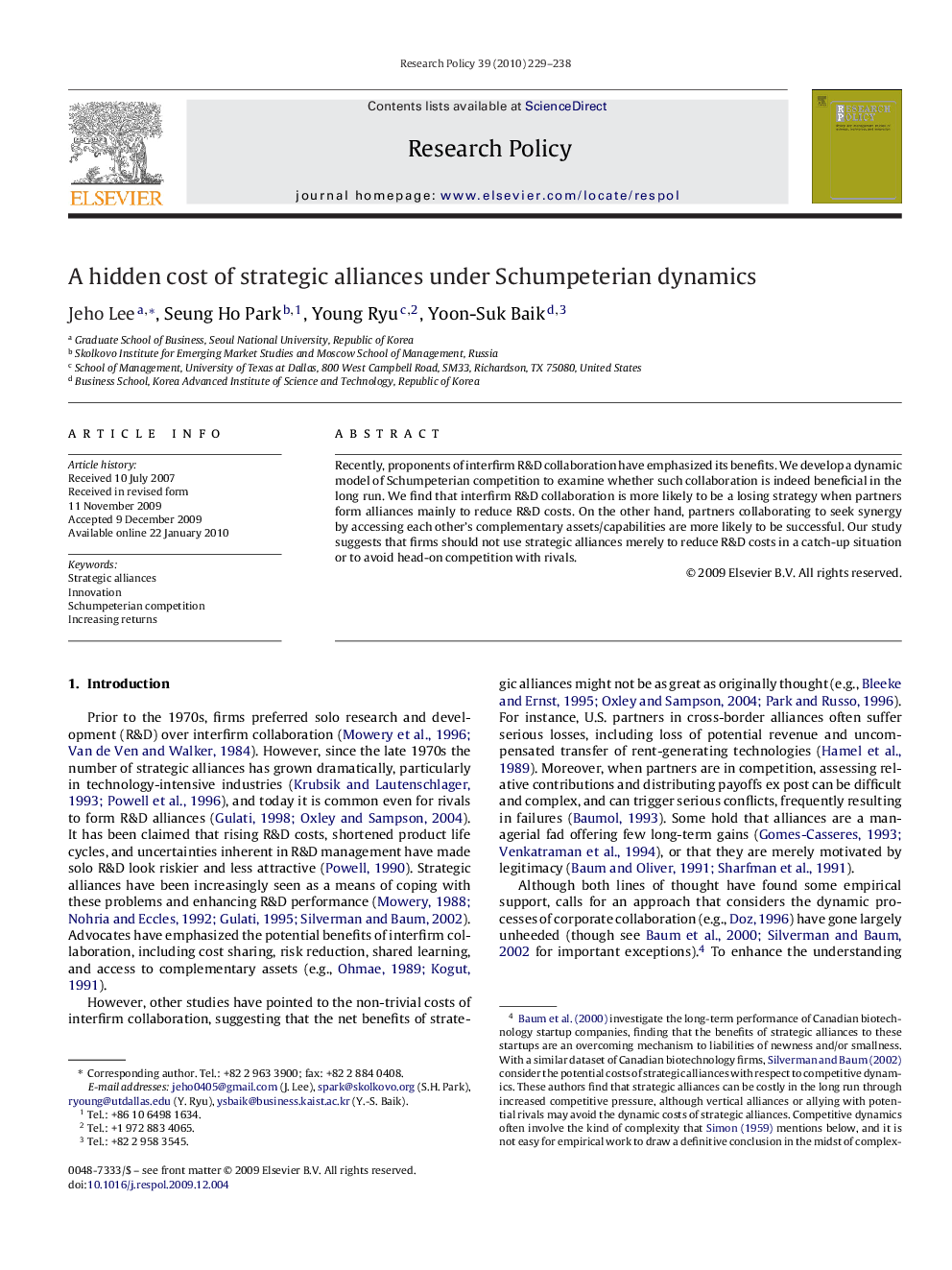| Article ID | Journal | Published Year | Pages | File Type |
|---|---|---|---|---|
| 984200 | Research Policy | 2010 | 10 Pages |
Abstract
Recently, proponents of interfirm R&D collaboration have emphasized its benefits. We develop a dynamic model of Schumpeterian competition to examine whether such collaboration is indeed beneficial in the long run. We find that interfirm R&D collaboration is more likely to be a losing strategy when partners form alliances mainly to reduce R&D costs. On the other hand, partners collaborating to seek synergy by accessing each other's complementary assets/capabilities are more likely to be successful. Our study suggests that firms should not use strategic alliances merely to reduce R&D costs in a catch-up situation or to avoid head-on competition with rivals.
Related Topics
Social Sciences and Humanities
Business, Management and Accounting
Business and International Management
Authors
Jeho Lee, Seung Ho Park, Young Ryu, Yoon-Suk Baik,
